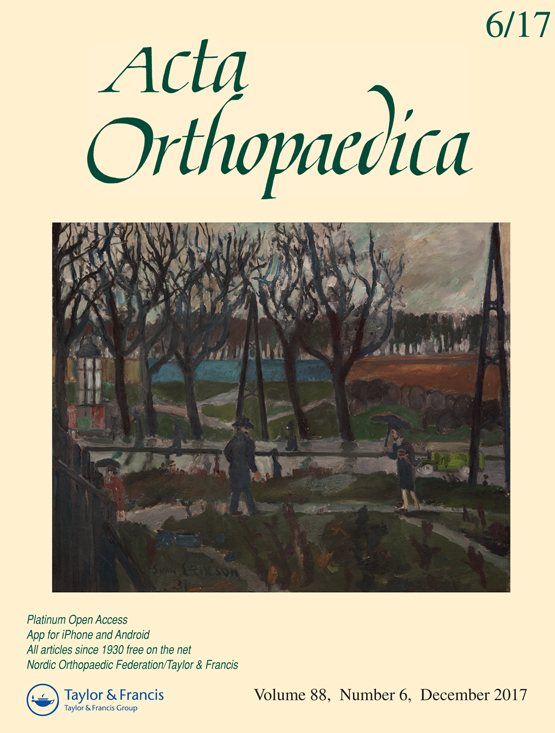Good outcome scores and high satisfaction rate after primary total ankle replacement
DOI:
https://doi.org/10.1080/17453674.2017.1366405Abstract
Background and purpose — Total ankle replacement (TAR) is gaining popularity for treatment of end-stage ankle arthritis. Large patient-centered outcome studies are, however, few. Here, we report data from the Swedish Ankle Registry. Patients and methods — We examined outcomes after primary TAR in patients from the Swedish Ankle Registry using PROMs (Patient Reported Outcome Measures; generic: EQ-5D and SF-36, region specific: SEFAS (Self-Reported Foot and Ankle Score), and a question on satisfaction). We included 241 patients registered with primary TAR between 2008 and 2016 and who completed PROMs preoperatively and postoperatively up to 24 months. We evaluated changes in PROMs following surgery and estimated effects of age, diagnosis, prosthetic design, and preoperative functional score on the outcomes. Results — All absolute scores improved from preoperative to 24 months after surgery (p ≤ 0.001). 71% of the patients were satisfied or very satisfied at the latest follow-up and 12% dissatisfied or very dissatisfied. Postoperative SEFAS correlated with age (r = 0.2, p = 0.01) and preoperative SEFAS (r = 0.3, p < 0.001), as did patient satisfaction (r = −0.2; p ≤ 0.03). Postoperative SEFAS and EQ-5D were similar between different diagnoses or prosthetic designs. Preoperative SF-36 was associated with diagnosis (p ≤ 0.03), postoperative SF-36 with age (r = 0.2, p = 0.01) and diagnosis (p < 0.03). Interpretation — We found statistically and clinically significant improvements in patient-reported outcomes following TAR surgery. The postoperative region-specific SEFAS was positively associated with older age. Prosthetic design seemed not to influence patient-reported outcome, whereas diagnosis partly did. Studies with longer follow-up are necessary to establish the long-term outcome of TAR and to elucidate whether short- and mid-term outcomes may predict implant failure.Downloads
Download data is not yet available.
Downloads
Published
2017-11-02
How to Cite
Kamrad, I., Carlsson, Åke, Henricson, A., Magnusson, H., Karlsson, M. K., & Rosengren, B. E. (2017). Good outcome scores and high satisfaction rate after primary total ankle replacement. Acta Orthopaedica, 88(6), 675–680. https://doi.org/10.1080/17453674.2017.1366405
Issue
Section
Articles
License

This work is licensed under a Creative Commons Attribution-NonCommercial 3.0 Unported License.
Acta Orthopaedica (Scandinavica) content is available freely online as from volume 1, 1930. The journal owner owns the copyright for all material published until volume 80, 2009. As of June 2009, the journal has however been published fully Open Access, meaning the authors retain copyright to their work. As of June 2009, articles have been published under CC-BY-NC or CC-BY licenses, unless otherwise specified.







